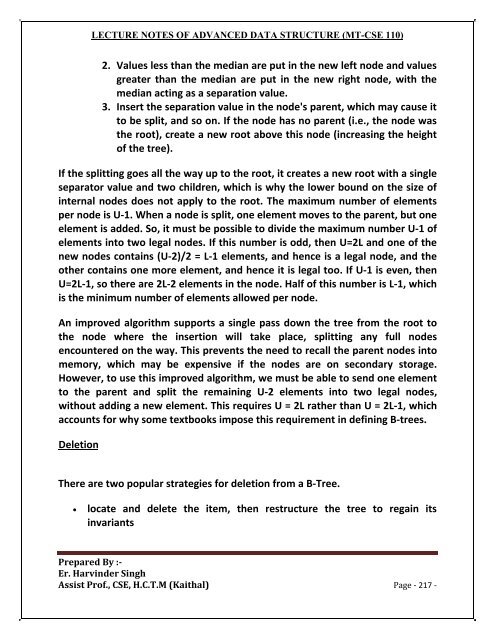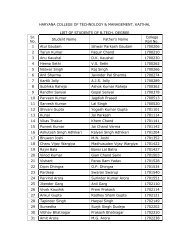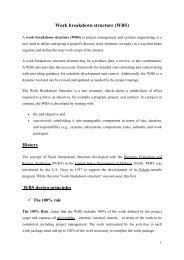Create successful ePaper yourself
Turn your PDF publications into a flip-book with our unique Google optimized e-Paper software.
LECTURE NOTES OF ADVANCED DATA STRUCTURE (MT-CSE 110)<br />
2. Values less than the median are put in the new left node and values<br />
greater than the median are put in the new right node, with the<br />
median acting as a separation value.<br />
3. Insert the separation value in the node's parent, which may cause it<br />
to be split, and so on. If the node has no parent (i.e., the node was<br />
the root), create a new root above this node (increasing the height<br />
of the tree).<br />
If the splitting goes all the way up to the root, it creates a new root with a single<br />
separator value and two children, which is why the lower bound on the size of<br />
internal nodes does not apply to the root. The maximum number of elements<br />
per node is U‐<strong>1.</strong> When a node is split, one element moves to the parent, but one<br />
element is added. So, it must be possible to divide the maximum number U‐1 of<br />
elements into two legal nodes. If this number is odd, then U=2L and one of the<br />
new nodes contains (U‐2)/2 = L‐1 elements, and hence is a legal node, and the<br />
other contains one more element, and hence it is legal too. If U‐1 is even, then<br />
U=2L‐1, so there are 2L‐2 elements in the node. Half of this number is L‐1, which<br />
is the minimum number of elements allowed per node.<br />
An improved algorithm supports a single pass down the tree from the root to<br />
the node where the insertion will take place, splitting any full nodes<br />
encountered on the way. This prevents the need to recall the parent nodes into<br />
memory, which may be expensive if the nodes are on secondary storage.<br />
However, to use this improved algorithm, we must be able to send one element<br />
to the parent and split the remaining U‐2 elements into two legal nodes,<br />
without adding a new element. This requires U = 2L rather than U = 2L‐1, which<br />
accounts for why some textbooks impose this requirement in defining B‐trees.<br />
Deletion<br />
There are two popular strategies for deletion from a B‐Tree.<br />
• locate and delete the item, then restructure the tree to regain its<br />
invariants<br />
Prepared By :<br />
Er. Harvinder Singh<br />
Assist Prof., CSE, H.C.T.M (Kaithal) Page ‐ 217 ‐







